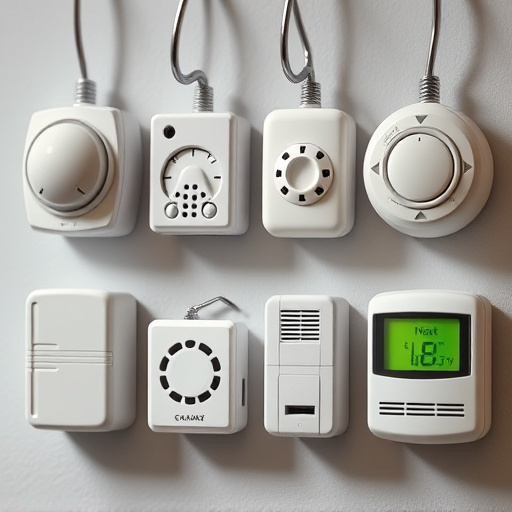Personal safety beacons with powerful Panic Alarm Sound and GPS location sharing provide crucial security in remote areas. Their impressive Panic Alarm Sound carry distance of up to hundreds of meters ensures swift rescue, saving lives by reducing emergency response times. This technology is vital for hikers, adventurers, and elderly individuals, offering immediate distress signaling and precise location tracking.
Personal safety beacons with location sharing have emerged as indispensable tools in emergency situations, revolutionizing how we ensure our well-being. In today’s digital era, understanding these beacons and their capabilities is crucial. This article delves into the lifesaving potential of personal safety beacons, exploring how location sharing enhances emergency response times, optimizing panic alarm sounds for maximum carry distance, and showcasing real-world scenarios where these beacons have made a tangible difference in saving lives.
- Understanding Personal Safety Beacons: A Lifesaving Tool
- How Location Sharing Enhances Emergency Response
- Designing Panic Alarms for Maximum Carry Distance
- Real-World Scenarios: When Beacons Save Lives
Understanding Personal Safety Beacons: A Lifesaving Tool
Personal safety beacons, a revolutionary tool in emergency situations, are designed to ensure individuals’ well-being and provide a sense of security. These compact devices emit a powerful Panic Alarm Sound that can be heard over significant distances, making them invaluable in remote or noisy environments. Carried on one’s person or attached to equipment, these beacons serve as a lifeline for adventurers, hikers, and anyone navigating unfamiliar territories.
The primary function is to signal for help during emergencies, utilizing advanced technology to pinpoint the user’s location. With a simple activation, the beacon transmits GPS coordinates through satellite networks, allowing rescue teams to swiftly respond. The carry distance of these devices can extend up to hundreds of meters, ensuring that even in vast open spaces or challenging terrain, help can be reached promptly.
How Location Sharing Enhances Emergency Response
In critical situations, location sharing technology in personal safety beacons plays a pivotal role in enhancing emergency response times. When an individual activates their beacon’s panic alarm, the device automatically sends out their precise GPS coordinates to pre-selected contacts or emergency services. This immediate and accurate location data allows responders to swiftly locate the user, even in remote areas where traditional communication might be challenging.
The range at which these beacons can carry these signals is impressive, ensuring that help arrives quickly. Whether it’s a hiker encountering an unexpected hazard deep in the wilderness or someone caught in a sudden emergency at home, location sharing enables faster intervention. This technology offers peace of mind, knowing that in case of distress, help is on the way, potentially saving lives and mitigating risks associated with delays in emergency response.
Designing Panic Alarms for Maximum Carry Distance
When designing panic alarms for maximum carry distance, engineers must consider both sound intensity and frequency. A powerful, high-pitched Panic Alarm Sound projects further than a lower-decibel alternative, allowing users to signal distress from a greater range. This is crucial in open spaces like parks or vast indoor areas where background noise levels can vary significantly.
Furthermore, incorporating advanced location-sharing technology ensures that the alarm’s carry distance isn’t just about sound projection. By accurately pinpointing the user’s location through GPS or other means, emergency services can swiftly respond, even if the panic alarm itself is faint or hard to locate. This integration of audio and spatial awareness enhances personal safety measures in diverse environments.
Real-World Scenarios: When Beacons Save Lives
In real-world scenarios, personal safety beacons equipped with location sharing capabilities have proven invaluable in emergency situations. Imagine a hiker who encounters a sudden panic moment while scaling a steep mountain; they can activate their beacon’s alarm, which emits a distinct sound designed to grab attention quickly. This immediate action alerts nearby hikers or park rangers of the distress call, enabling them to pinpoint the individual’s location using GPS technology. The beacon’s range can stretch up to hundreds of meters, ensuring help arrives promptly even in remote areas.
Consider an elderly person who lives alone; they might find themselves in a dire situation, unable to reach their phone to call for aid. With a personal safety beacon, a simple push of a button triggers the panic alarm, broadcasting their location and distress signal to pre-registered contacts or local emergency services. This rapid response can make all the difference, especially in situations where every second counts.
Personal Safety Beacons, equipped with location-sharing capabilities, have emerged as invaluable tools in ensuring individual well-being. By leveraging technology to emit distinct panic alarm sounds and transmit accurate coordinates, these beacons significantly enhance emergency response times. Whether designed for outdoor adventures or urban navigation, their maximum carry distance ensures individuals can be quickly located in diverse scenarios. Real-world accounts demonstrate the life-saving potential of these devices, underscoring their importance as a crucial safety measure in today’s world.
